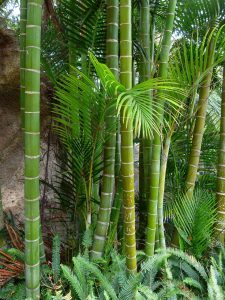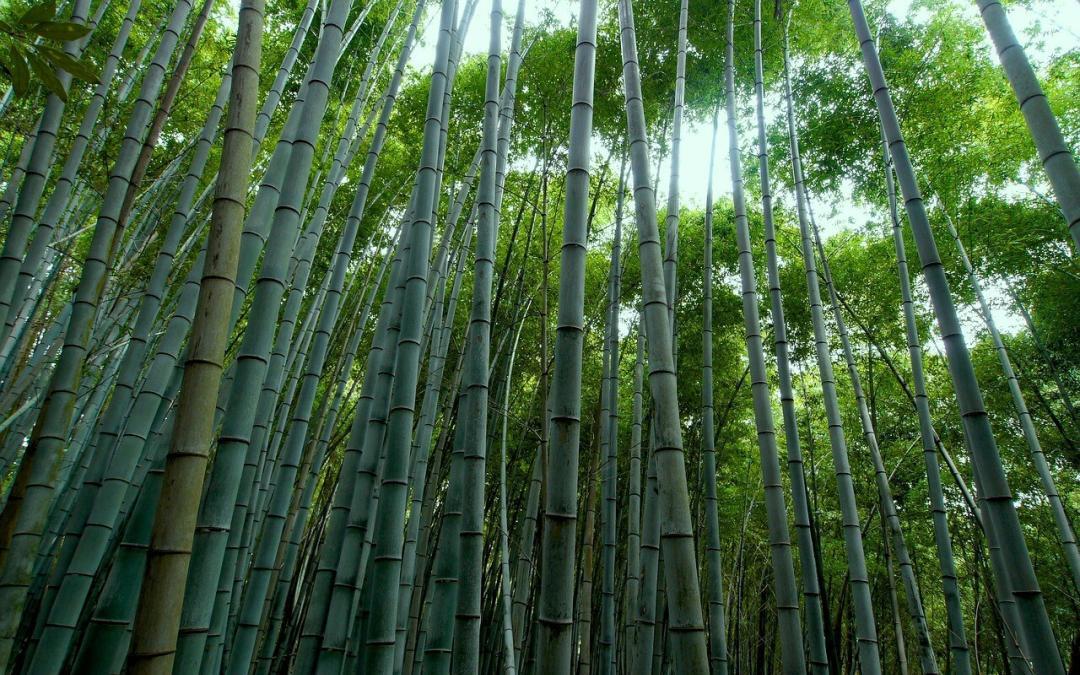Do you love the feel of the tropics, but live in a northern climate? I love the my old-fashioned cottage garden, but that hasn’t stopped me from thinking about adding some different elements in far corners of my back yard. I’d love a bamboo screen between me and the neighbors—not that there’s anything wrong with the neighbors, they’re great people, but it would be nice to go into the backyard in my pajamas to let the chickens out for the day without wondering who was seeing me.
I never thought I could grow anything but those little lucky bamboo plants before, but learned differently last year. Bamboo comes in many varieties—including some that are cold hardy to -20 degrees F. You say you live in zone 4 and get four feet of snow in the winter? No problem! There’s a variety of bamboo for you. Fargesia rufa grows to eight feet tall along most areas of the Wasatch front. It likes the shade and doesn’t need containment because it’s a clumping variety instead of a spreader.

Image by Hans Braxmeier from Pixabay
Yellow groove bamboo will grow 6 or 8 feet tall in zone 4, in zone 5 it will reach 12-14 feet, in zone 6 it will top out at18 ft, and in zone 7 it will reach a whopping 40 feet! It has a two-inch diameter at maturity and the culms tend to form crooks, or bends near their base, which makes it a great variety for ornamental uses.
There is also a green version of this plant and they are good to negative 20 degrees. It grows aggressively in full sun and stays green all winter.
Phyllostachys nuda grows to a one-inch diameter and up to eighteen feet tall in under fifty days. In zone 7 it will top out at about 30 feet.
Dwarf white stripe is a low-growing ground cover cane with shoots under an inch in diameter and growing no more than four foot tall. It is recommended for zones five and warmer. It likes shady spots.
For best growth, mow back the growth in the fall and mulch, then rake back the mulch in the spring and it will shoot up again. Bamboo is great for things beyond screening from the neighbors—you can use the canes as garden stakes and in other projects as they are very strong and in some varieties can be harvested after a few years. Most varieties take several years to reach full height, while others grow much more quickly and can be harvested more often.
Alternatively, there are other canes out there that aren’t part of the bamboo family that also have a similar look. My local nursery has this cane growing out front and sells cuttings for it every year. It is an invasive variety, so I would have to build some sort of root barrier to contain it if I wanted to use it as a screen.
that aren’t part of the bamboo family that also have a similar look. My local nursery has this cane growing out front and sells cuttings for it every year. It is an invasive variety, so I would have to build some sort of root barrier to contain it if I wanted to use it as a screen.
He cuts it to ground level every fall and burns back the rest and it grows up happy as you please every spring. Bamboo requires more water than many plants in your yard, so you’ll have to keep on top of things. One man in Utah County uses gray water (waste water from the sink) to water his tropical plants every other day. In desert regions you may need to get creative to grow some of these babies, but it can be done.
Some varieties need special attention in the fall to prepare it for winter—ask an expert for specifics on your plant. All of these plants and many, many more are available for mail-order sale on the internet and some may be available at a nursery or garden center near you.
Prices can be high, but local sources often sell it for less. Alternatively, you may find someone else who has some who would be willing to trade or sell you a cutting.


Great idea! I love tropical plants, but had no idea I could grow my very own bamboo. Maybe I’ll try planting some next year…if I can figure out where.
Nichole